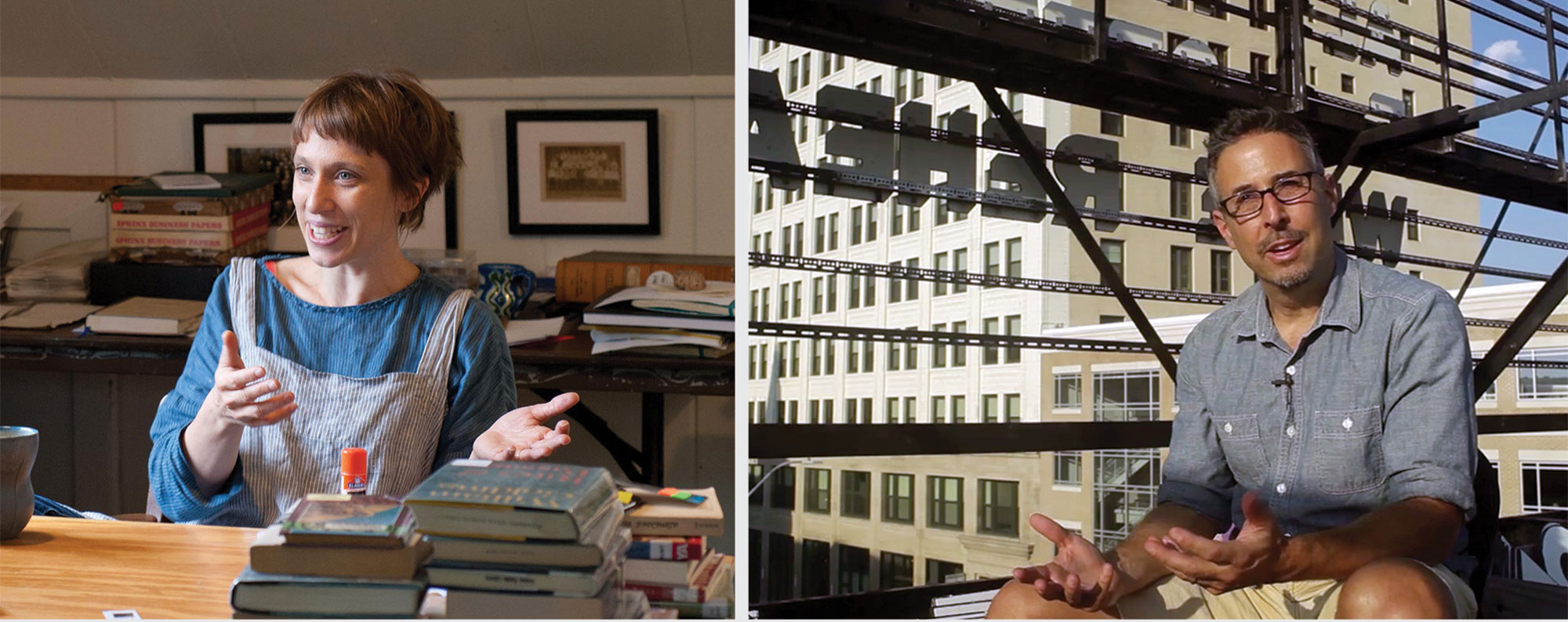You May Also Like
A Weighty Conversation In Celebration of Artists and Their Truth Art in ContradictionDuring the first 35 years of the Carnegie International, from 1896 to 1931, the museum tracked every submission to what was then an annual painting show. Exactly 10,632 artworks were rejected. Drawn to this “complete list of absence in the museum,” Pittsburgh-based artists Lenka Clayton and Jon Rubin, with the help of a small team, will paint the titles of these rejected paintings into the “accepted” column as part of the 57th Carnegie International. Transforming Carnegie Museum of Art’s Forum Gallery into a working studio, there will be two people painting at a time, turning titles into text paintings on paper, churning out one every 12 minutes to complete all 10,632 titles during the 23-week-long show. After a completed work hangs in the gallery for a minimum of five minutes—creating an official record of it being exhibited in the International—visitors will be encouraged to take the painting home.
How did the recently surfaced travel diaries from former museum director Gordon Washburn, kept during his 1950s research trips for the International, play a role in the project?
LC: One thing that struck us is how he would describe a work of art very quickly and then write “yes” or “no.” This simple decision determined if the work would end up being in the museum or perhaps get seen at all. Also, he was describing what he was seeing in these beautiful little accidental haikus, like: “Child Fallen in Well. No.” We were taken by those moments of linguistic connection between, say, a title and a “yes” or “no,” as if it is acceptable or not. I think that kind of play was our way in.
You learned that a list of all submissions existed?
LC: It’s so rare, because usually museums or galleries, when they reject something, that’s it. It’s gone. The fact that the museum kept these meticulous records is really remarkable. As artists, Jon and I both love systems and lists. This was the most beautiful, complete list of absences, which are normally completely unspoken and invisible.
Why revive the rejections?
JR: It’s akin to how history is told through the victor’s eyes. There’s one version of what the International is that’s one of tens of thousands of versions of what it could be. We’re using our inclusion in the show as a loophole to bring in 10,632 works we found lying just outside the history of the International. In essence, their rejected works become our accepted work.
You will paint the titles in alphabetical order. Why?
LC: Once we shifted it alphabetically, it became this extraordinary narrative—a collection of everything that people during this time period felt worth paying attention to and depicting. It’s extremely touching, this encyclopedic list of human endeavor. Then, when layered on top of that, you think of this all being rejected.
JR: In working alphabetically, a beautiful non-linear progression occurs, as one title flows to the next, like The Only Time, The Opal Pool, The Open Door, The Open Sea, The Opera Cloak, and The Organ Grinder. Also, there’s wonderful repeats throughout like Gray Day from 1908 and Gray Day from 1924 by two entirely different artists perhaps living in two entirely different cities, but sharing the same subject matter—and rejection.
LC: The absence comes up in this, too, because in the original records, what’s noted is the artist’s name, the year, the title of the painting, and whether it was “A” (accepted) or “R” (rejected). That’s it. There’s no image attached to the record, or further description. If I say to you Gray Day and to another person Gray Day, it’s probably a completely different image for each of you. It’s lovely to think that both paintings actually existed in the museum for a period, but they were never seen by the public.
You want visitors to take a work home?
JR: We both love the idea that you can enter Carnegie Museum of Art and escape with a painting. We are using the Forum Gallery as a temporary site to conjure these historically rejected works into this contemporary moment and then back out again into the world. So, we are interested in offering visitors a chance to take home and give a new life, context, and future to these works, perhaps imagining themselves as part of a new community of 10,632 collectors.
Receive more stories in your email
Sign upTags:
Carnegie International
